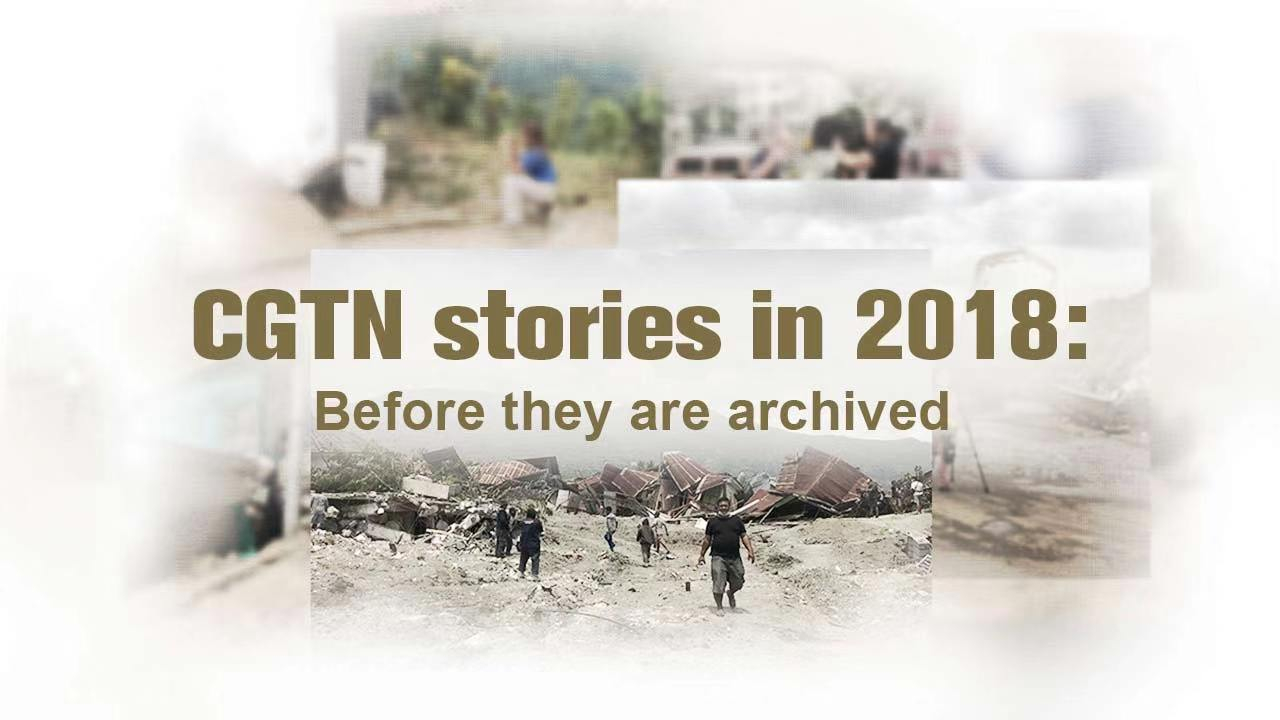Journalists are not only confined to busy newsrooms, press conferences, and glitzy gatherings, they are hunters on the prowl, following trails of scent back to their sources to cover elusive events and uncover the truth. Where change is urgent to save a life, bringing untold stories to light is the first step.
CGTN reporters are always on the go, traveling the length and breadth of the globe to record the woes that befall life.
From the scorched soil of Yemen and the hotspots of Gaza, to the quake-shattered communities of Indonesia's Palu and along the trails left by the caravans of migrants around Central America, hundreds of stories have been told in 2018 to raise public awareness about lives in despair and history that has gone astray.
But for all the visuals that made it onto your smartphone and television screens, more materials telling the same stories from a different angle have been kept under wraps. That is, until now.
We've collected photos taken by or of our correspondents on location to recount the biggest stories of this year with a more personal touch that conventional broadcasting can't afford.
The photographs are not intended to belittle the achievements of the year, or spoil the festive mood; but at a time when eye-catching headlines vie for audience attention, the average lifespan of news has become much shorter than that of the causes of woes in the news.
We hope this project could help keep some of the most serious events of 2018 in the public discourse a little longer so that discussion, debate and dialogue can carry on.
No-go zones
A ceasefire was finally reached in war-torn Yemen in September amid a pressing humanitarian crisis that has caused unfathomable sufferings to those who have so far escaped the death lurking in the shadows.
Armed violence in Yemen has killed some 6,800 civilians since the conflict began in 2015, according to UN estimates, which some NGOs say are conservative numbers.
But the number of those who succumbed to famine is much higher. London-based Save the Children says as many as 85,000 children under the age of five may have died from acute malnutrition in the past three years.
With the UN warning that up to 14 million Yemenis are on the brink of famine, and amid aid shortages, fears that the death toll could rise higher are not unrealistic.
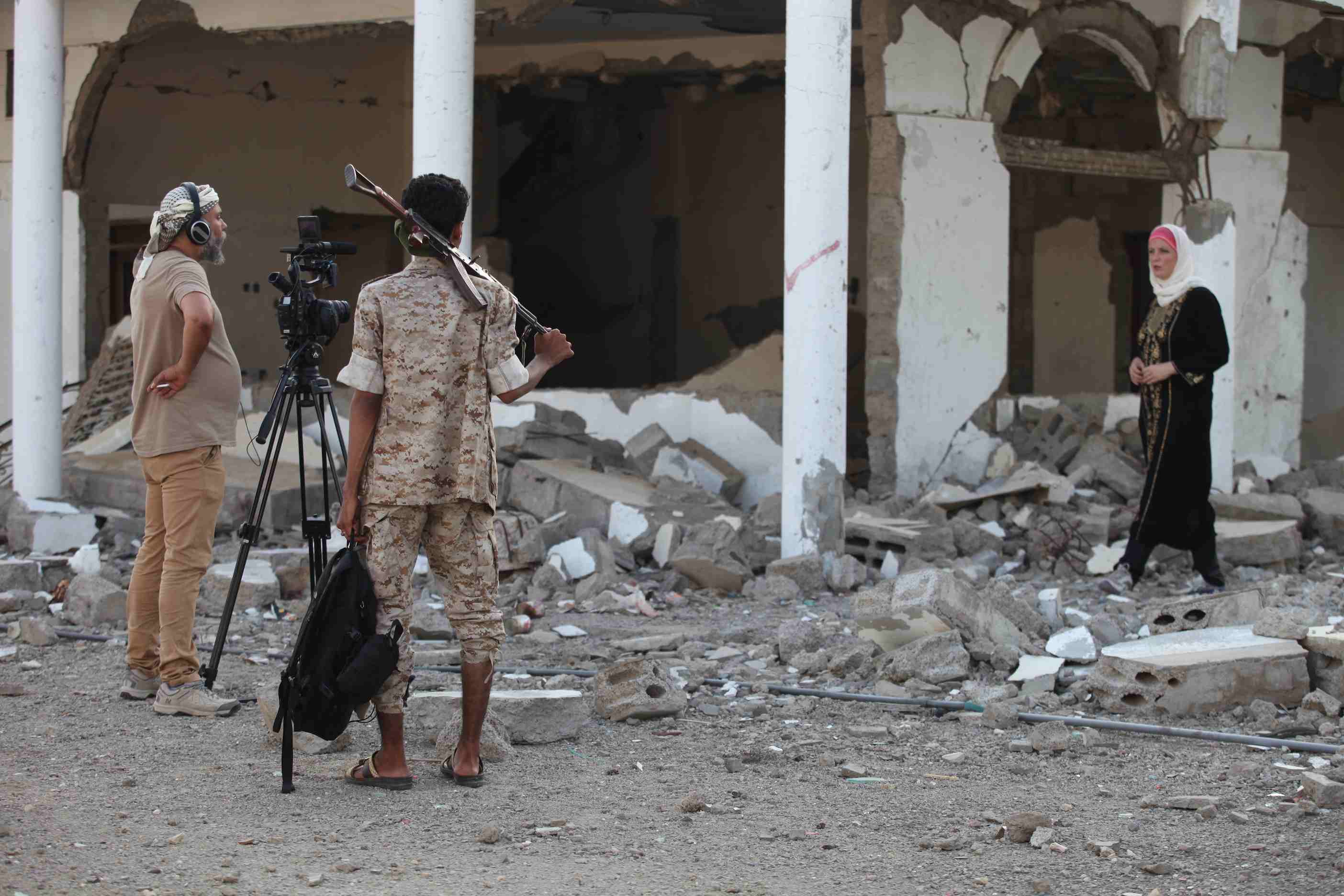
CGTN reporter Natalie Carney (L) reports near the rubbles of a crumbling building in Yemen in September 2018 as an armed guard stands by. /CGTN Photo
CGTN reporter Natalie Carney (L) reports near the rubbles of a crumbling building in Yemen in September 2018 as an armed guard stands by. /CGTN Photo
"The war has forced the closure of almost all the country's ports and borders, making it extremely difficult to get basic needs into the country and forcing the price of those that do to skyrocket. Health care has all but collapsed," says CGTN reporter Natalie Carney, who was stationed in Yemen in September.
While the powder keg of rivalries cast a dark cloud over Yemen, Palestine was seething with anger over Israeli policies and Washington's change of course.
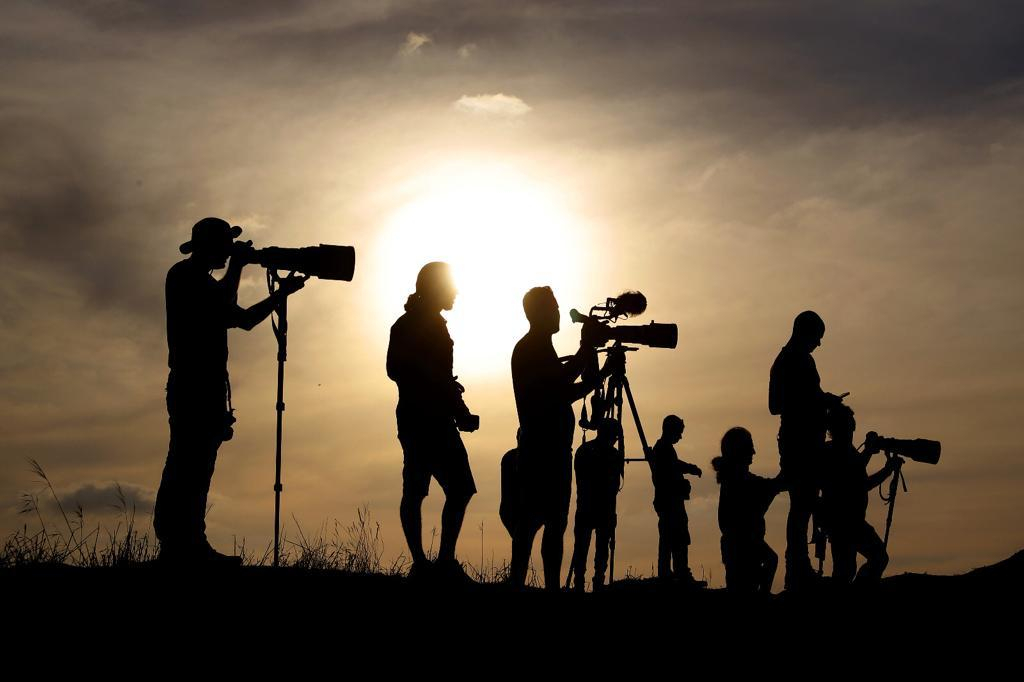
The air of tranquility of this photo is in stark contrast to what is being observed through the lenses. Along the Gaza-Israel border, journalists are filming Palestinian protests from the Israeli side of the border in October 2018. /Photo by CGTN's Stephanie Freid
The air of tranquility of this photo is in stark contrast to what is being observed through the lenses. Along the Gaza-Israel border, journalists are filming Palestinian protests from the Israeli side of the border in October 2018. /Photo by CGTN's Stephanie Freid
From late March, Palestinians have been gathering along the Gaza-Israel border as part of their “The Great Return March” protest. They've been opposing decades-long Israeli occupation, reaffirming their right to their lands in modern-day Israel and condemning Washington moving its embassy from Tel Aviv to Jerusalem. By the end of October, 228 Palestinians had been killed and nearly 25,000 were injured, according to the UN. The situation has hardly improved since.
The Palestinians may be outmatched militarily by Israel, but they have their own ways to fight back.
"Thousands of acres of land inside Israel have been scorched by incendiary balloons and kites sailed across the border Gaza into Israel," wrote CGTN reporter Stephanie Freid, who has been following the violence along the border.
Most of the thorny geopolitical events that grabbed the world's attention in 2018 are the latest episodes in issues as old as time. And this couldn't be any truer than in the tense ties between Ukraine and Russia, with the most recent sticking point emerging in November when Moscow arrested a number of Ukrainian sailors and seized three warships for allegedly intruding into its territorial waters.
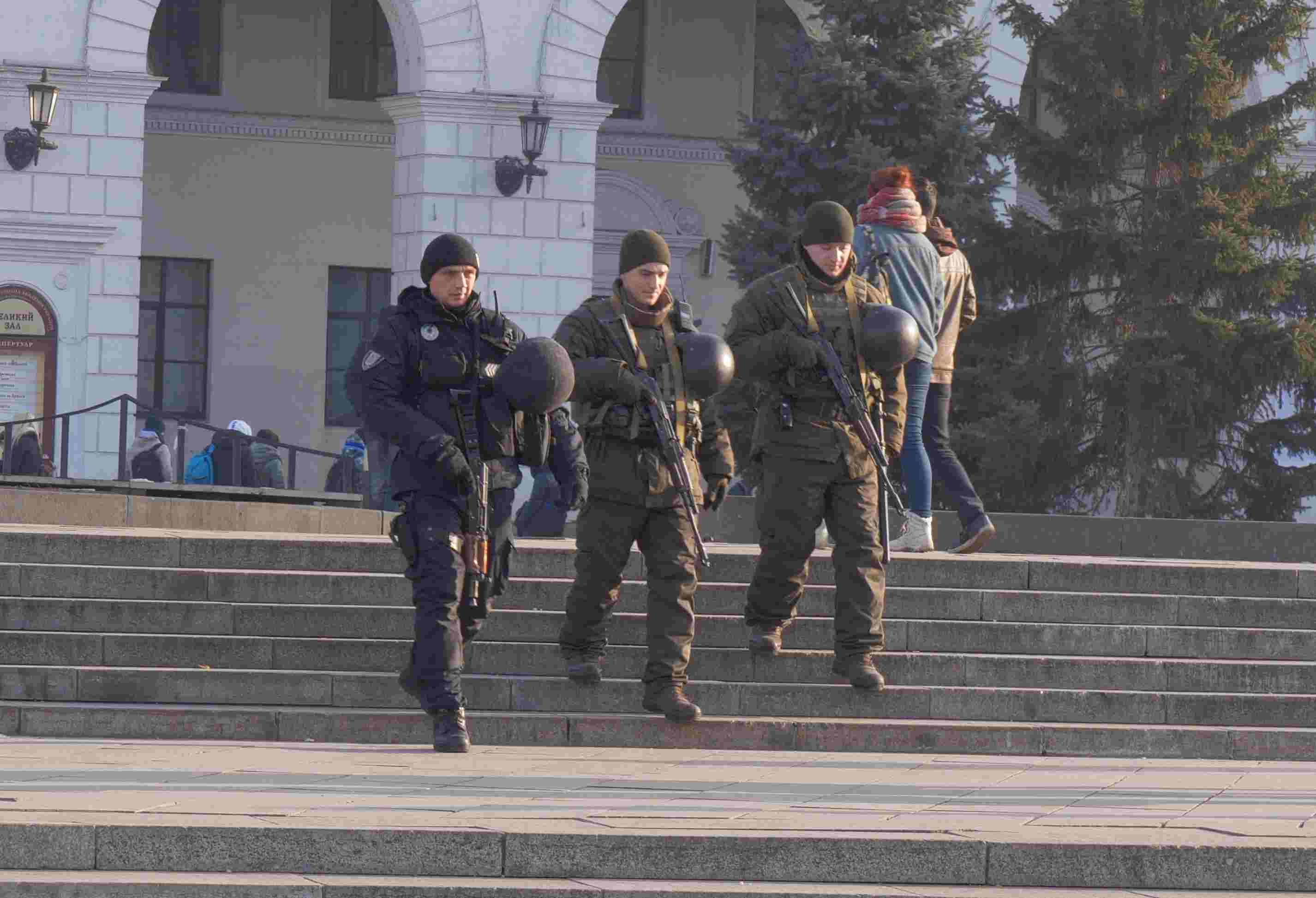
Armed police patrol a street in Kiev, Ukraine, on November 20, 2018, days before a martial law was put in place. /Photo by CGTN's Aljosa Milenkovic
Armed police patrol a street in Kiev, Ukraine, on November 20, 2018, days before a martial law was put in place. /Photo by CGTN's Aljosa Milenkovic
“When I arrived on November 20 to the capital Kiev, tensions were obvious. I have been reporting from Ukraine for five years, starting from the violent events at the Maidan Square back in 2013. And the most striking images this November were numerous heavily armed patrols of the National Guard in Kiev's city center – a scene I haven't seen here even during the tensest periods of clashes in 2013 and 2014. Something was about to happen. You could feel it in the air. And it did,” observed Aljosa Milenkovic, CGTN's correspondent in Eastern Europe.
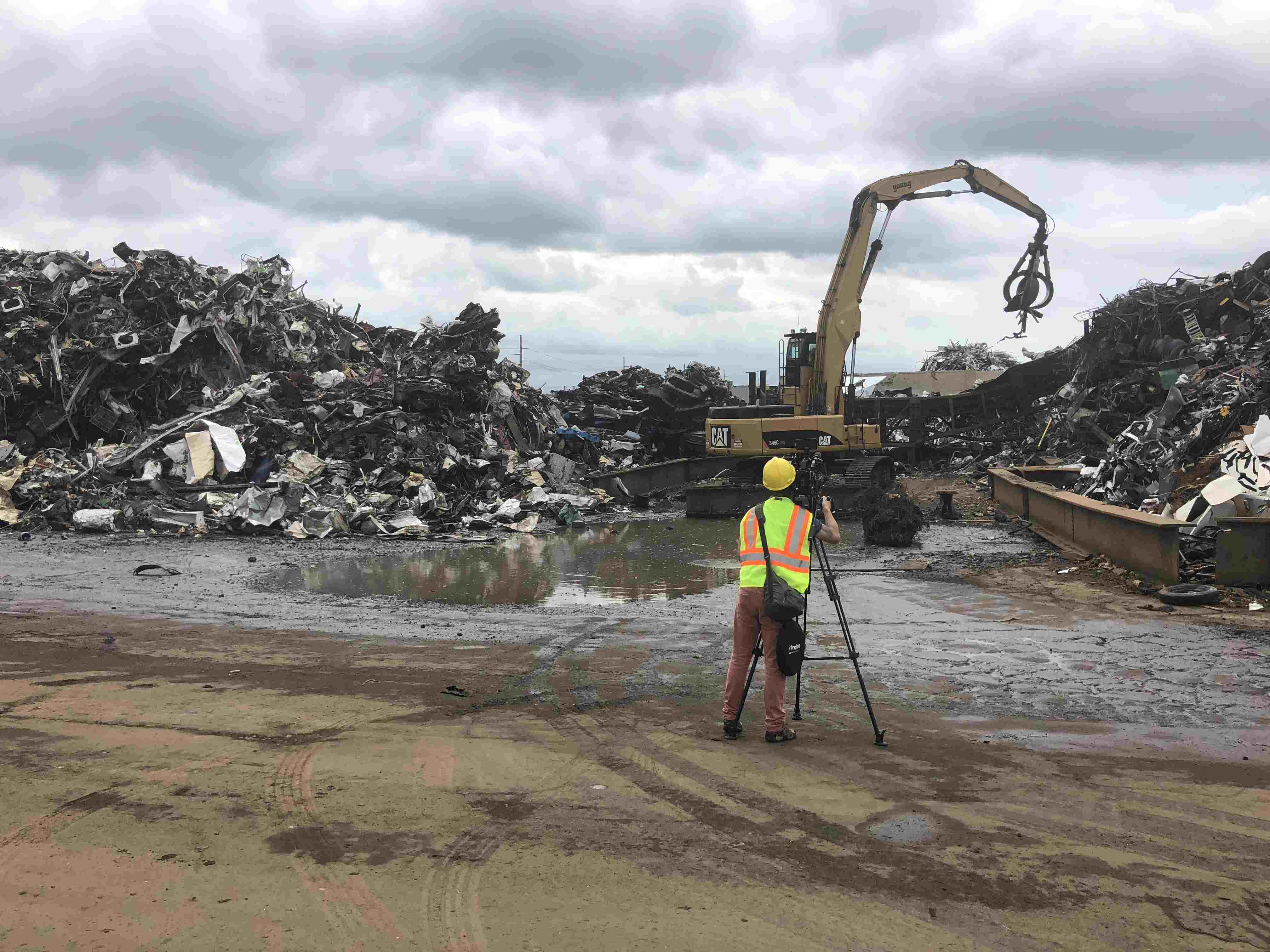
A CGTN crew member films at a recycling center in Holland, Michigan, on September 20, 2018. The company that runs the site was caught in the crossfire of the China-U.S. trade dispute, and their business with China has been halted. /CGTN Photo
A CGTN crew member films at a recycling center in Holland, Michigan, on September 20, 2018. The company that runs the site was caught in the crossfire of the China-U.S. trade dispute, and their business with China has been halted. /CGTN Photo
Guns may be symbolic of wars, but wars are not always carried out by guns.
CGTN reporter Dan Williams made a trip to U.S. company Padnos during the height of the Trump administration's tariff threats to nearly all of its major trading partners, China in particular. Local businesses profiting from a robust relationship between the world's two largest economies were shaken. In Dan's photo, cloudy skies hang over the company's recycling center, which was brought to a standstill by the trade dispute, giving rise to an eerie feeling – probably best capturing the mood months ago and, should the U.S. and China fail to reach common ground, the geopolitical landscape of the future.
Stories of life and death are the daily bread of reporters. The people who go through such a moment could implode at any moment as their hopes hang by a thread.
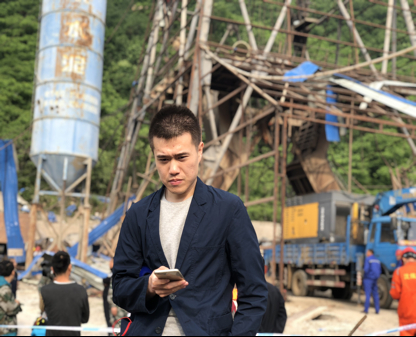
An iron ore mine collapse in Benxi of northeast Liaoning Province killed 11 people on June 5, 2018. CGTN reporter Xu Xinchen was among the first batch of reporters on site. It was his first live coverage in close proximity to death. /CGTN Photo
An iron ore mine collapse in Benxi of northeast Liaoning Province killed 11 people on June 5, 2018. CGTN reporter Xu Xinchen was among the first batch of reporters on site. It was his first live coverage in close proximity to death. /CGTN Photo
Twenty-five people were still trapped in a mineshaft when Xu Xinchen, a CGTN domestic affairs reporter, arrived at the site of an iron mine accident in northeast China's Benxi City.
“After two groups of miners were lifted out alive, a woman fell to the ground near me. One of her relatives, probably her husband, was not with them. I could see hope slowly leaving her face. During the next five minutes, before any news at all reached the ground, she cried so hard. So hard that when the man she was praying for was finally pulled out, she collapsed on the muddy ground again – only this time because of relief.”
Leaving home to no return
Yet for around 68.5 million displaced people, hope is a luxury they can't afford. Among them, 40 million are homeless on their homelands, while another 25.4 million had strayed onto foreign soils where arms are sometimes directed to their chests.
Data published by the Office of the United Nations High Commissioner for Refugees on June 19, one day before World Refugee Day, showed that forced displacement has reached its highest level on record.
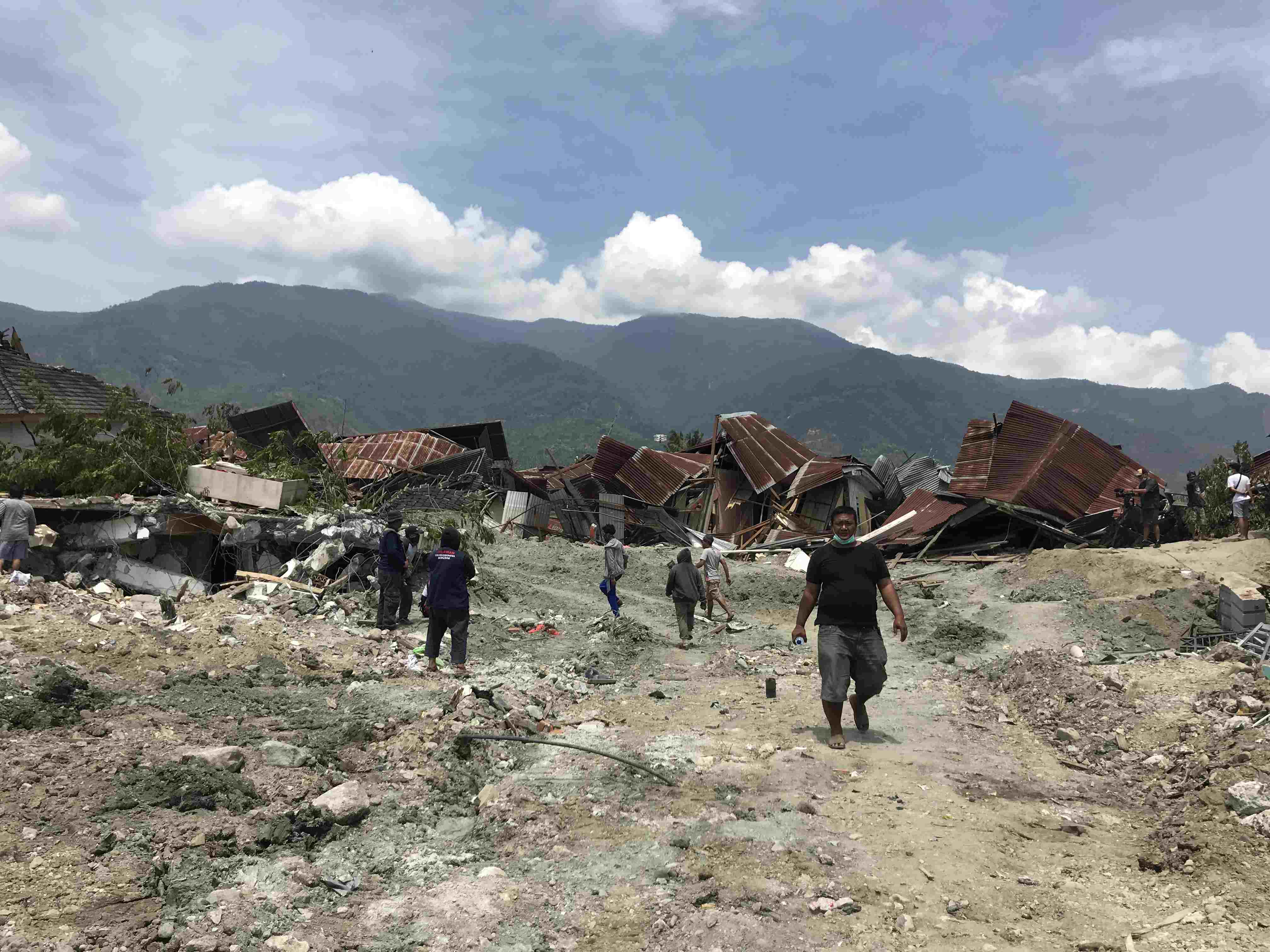
Much of the death and destruction in the aftermath of the 7.5-magnitude earthquake that jolted Indonesia's Central Sulawesi province was caused by a phenomenon called liquefaction. Survivors in Balaroa, a government housing complex, described seeing the ground roll like waves, shifting structures to as far as a hundred meters away, October. 4, 2018/Photo by CGTN's Barnaby Lo
Much of the death and destruction in the aftermath of the 7.5-magnitude earthquake that jolted Indonesia's Central Sulawesi province was caused by a phenomenon called liquefaction. Survivors in Balaroa, a government housing complex, described seeing the ground roll like waves, shifting structures to as far as a hundred meters away, October. 4, 2018/Photo by CGTN's Barnaby Lo
When wrestling with Mother Nature, mankind seldom wins. The theory was tested twice in Indonesia in 2018, with countless human lives lost.
At the time of writing this article, the death toll from the tsunami that washed up on the beaches around the Sunda Strait in Indonesia on December 22 has risen to more than 400, as many more continue to relive the nightmare of the deadly earthquake that killed more than 2,000 people in Central Sulawesi province in September.
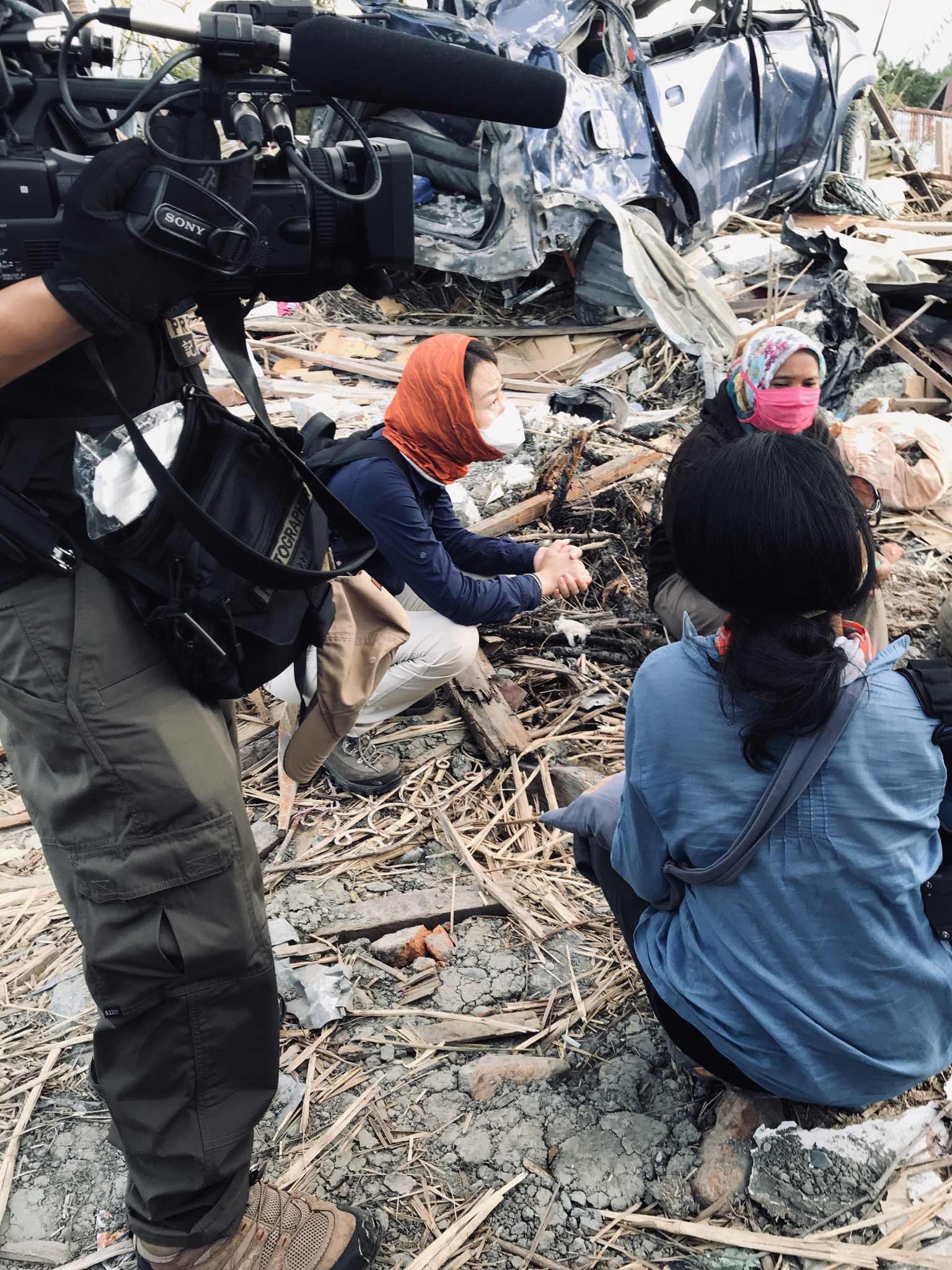
CGTN's Miro Lu speaks to the residents of Palu City on 8 October 2018, a week after a 7.5-magnitude earthquake struck the Indonesian island of Sulawesi. /CGTN Photo
CGTN's Miro Lu speaks to the residents of Palu City on 8 October 2018, a week after a 7.5-magnitude earthquake struck the Indonesian island of Sulawesi. /CGTN Photo
Where survivors once called home are dilapidated structures that look nothing like the houses they used to be. They were either razed to the ground by mighty tremors, or crumbled into pieces by thunderous tsunami waves, turning into debris partially buried in mud where people gathered to mourn their loved ones who succumbed to the wrath of nature.
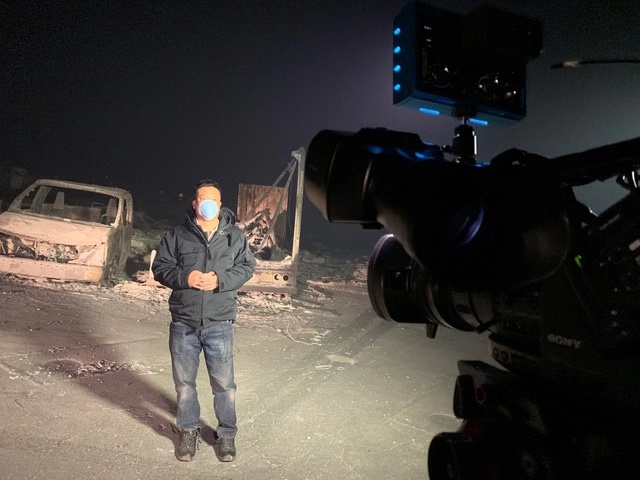
CGTN North America correspondent Mark Niu reports on wildfires from Paradise, California, November 12, 2018. /CGTN Photo
CGTN North America correspondent Mark Niu reports on wildfires from Paradise, California, November 12, 2018. /CGTN Photo
While water moved into the land in Indonesia, an inferno ate through thousands of acres of California in November, growing into the worst wildfire in the history of the U.S. state. Houses were reduced to ashes, and people roamed charred lands barely able to recognize where their houses used to stand.
Aside from natural disasters, manmade crises were another significant contributor to the most high-profile displacement cases in 2018. From the Mediterranean Sea to Central America, no immediate solutions to the migrant issue loomed on the horizon given the underlying causes: poverty and war, complicated by geopolitics, which are far from easy to untangle.
The influx of migrants has been met with hostile policies in some parts of the world, like in the U.S. where Trump pledged to buttress the border with Mexico with a wall… and barbed wire.

CGTN reporter Alasdair Baberstock stands on top of a Jeep to get a better angle of Donald Trump's border wall prototypes at the U.S.-Mexico border, May 5, 2018 /CGTN Photo
CGTN reporter Alasdair Baberstock stands on top of a Jeep to get a better angle of Donald Trump's border wall prototypes at the U.S.-Mexico border, May 5, 2018 /CGTN Photo
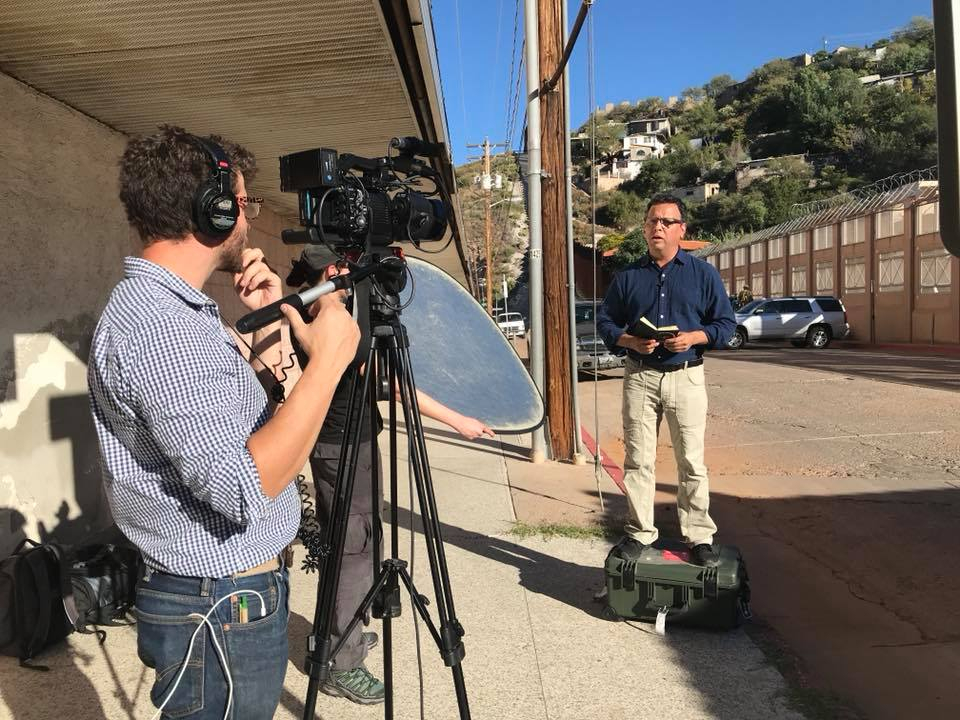
CGTN reporter Franc Contreras (R), camera operator Alan Davis and producer Pamela Salinas report from the U.S.-Mexico border at Nogales, the day after the U.S. midterm elections. President Donald Trump sent U.S. soldiers to the border to install razor wires on the international divide. CGTN Photo
CGTN reporter Franc Contreras (R), camera operator Alan Davis and producer Pamela Salinas report from the U.S.-Mexico border at Nogales, the day after the U.S. midterm elections. President Donald Trump sent U.S. soldiers to the border to install razor wires on the international divide. CGTN Photo
While some governments waged a war on those escaping poverty, prosecution and death, more chronic conflicts in different parts of the world, especially around the Middle East, continued to rage.
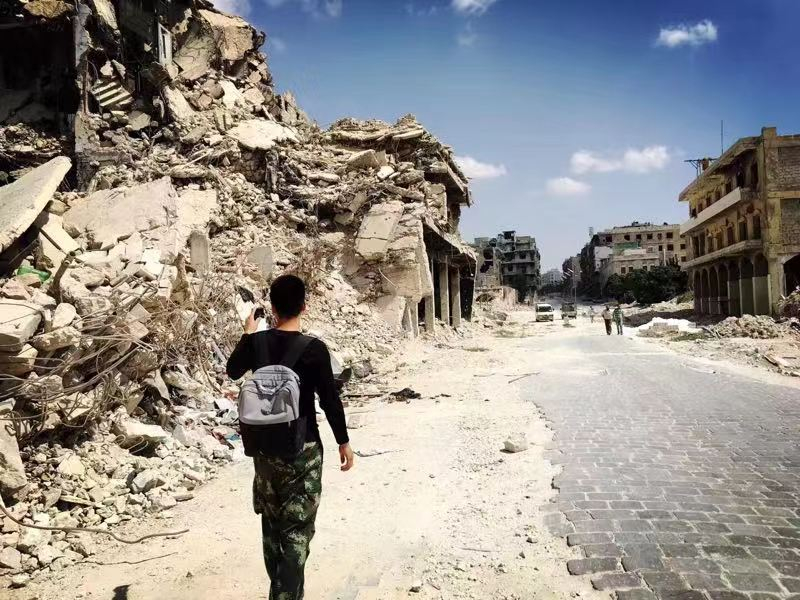
The city of Aleppo is now in ruins. /Photo by CGTN's Han Peng
The city of Aleppo is now in ruins. /Photo by CGTN's Han Peng
For centuries Aleppo was a trade center linking the Mediterranean Sea and Mesopotamia – mainly present-day Iraq and Kuweit – and a point of cultural convergence. It is also one of the oldest continuously inhabited cities. Having survived thousands of years, the Syrian city however has been faced with prospects of annihilation in recent years due to the country's bloody civil war and relentless fighting.
“Aleppo was built around a giant citadel that dates back thousands of years. In modern times, tourists from across the world flocked here to visit the majestic castle as luxury hotels, restaurants and bars buzzed around it. During the civil war, the citadel's height lent it a strategic importance that rivalling sides could not ignore, which sealed its tragic fate," wrote CGTN reporter Han Peng.
Innocence caught in the crossfire
Irrespective of sources of suffering, children are always the most exposed. Among the photos we've received from our correspondents, the most touching – and shocking – are those capturing the plight of children in danger zones.
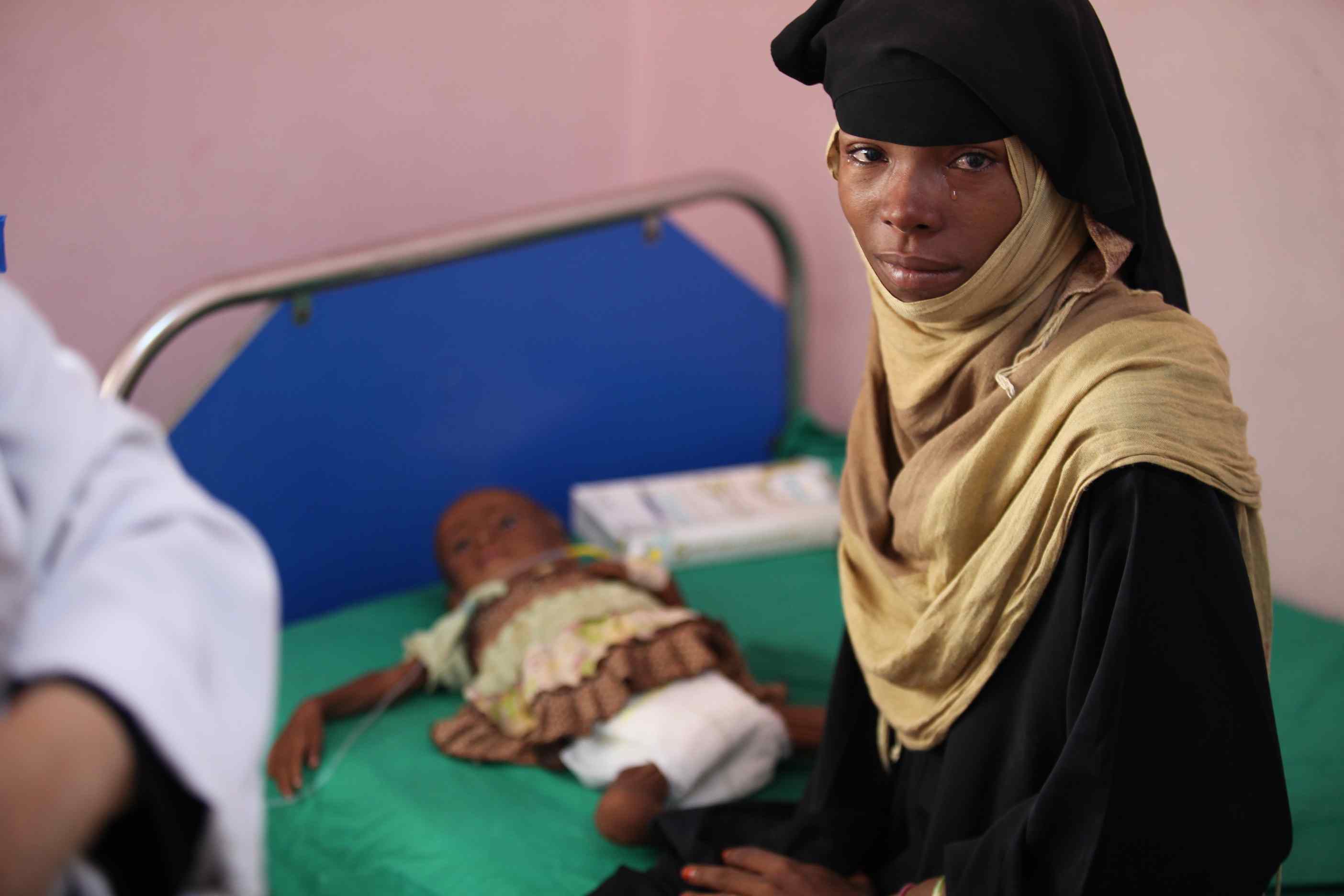
A mother sits in the bed where her malnourished child is receiving treatment in Al Sadaka hospital, Aden, Yemen, September 2018. /Photo by CGTN's Natalie Carney
A mother sits in the bed where her malnourished child is receiving treatment in Al Sadaka hospital, Aden, Yemen, September 2018. /Photo by CGTN's Natalie Carney
“This mother is one of hundreds of thousands of parents on the verge of losing their baby to any number of diseases plaguing war-ravaged Yemen. Her little daughter is dangerously malnourished as food becomes increasingly out of reach for most Yemenis," wrote CGTN reporter Natalie Carney.

CGTN reporter Ravinder Bawa talks to a little refugee in a Rohingya camp in Cox's Bazar, Bangladesh, June 25, 2018. /CGTN Photo
CGTN reporter Ravinder Bawa talks to a little refugee in a Rohingya camp in Cox's Bazar, Bangladesh, June 25, 2018. /CGTN Photo
A heartbreaking loss, often neglected in the political arenas where solutions always seem so close yet so far away, are the denied potentials of disadvantaged children. Generations of children around the world, stuck in hopelessness, have been deprived of their future and the right to dream.
“I met this young girl in a Rohingya camp who was talking to me in English. So I stopped to talk to her and she told me she picked it up from UN volunteers. By June 2018 most of the refugees (from Myanmar) had settled in their camps (in Bangladesh) and were getting ready to face seasonal monsoons. About half of the population of Rohingya refugees are children who are always under the threat of being trafficked,” wrote CGTN reporter Ravinder Bawa.
Aid packages attempt to bring sustenance to underprivileged people, but their hunger for education is still an overlooked issue.
While textbooks remain a scarcity in certain communities because of hardships and lack of awareness about the importance of education, printed books are disappearing in other societies out of choice, not force. Classrooms are gradually moving online, but globally, around 346 million children lacked Internet access by the end of 2017 with three out of five people in Africa disconnected from the digital world, according to UNICEF data.
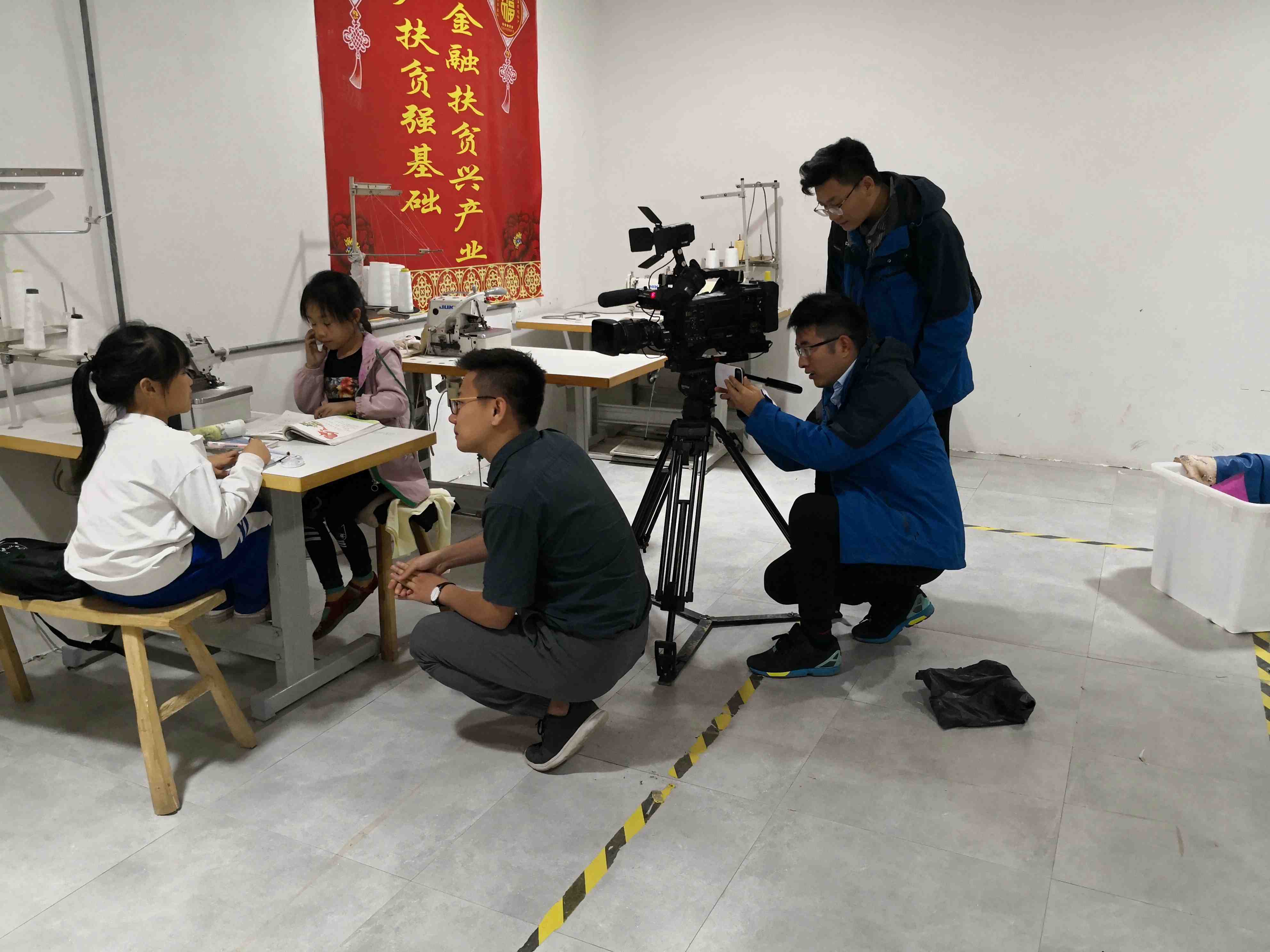
CGTN's domestic affairs reporter Li Jianhua (C) talks to two schoolchildren at a factory in an underdeveloped village in central China's Henan Province on October 15, 2018. The girls were brought to the factory to do their homework as their parents work the night shift. /CGTN Photo
CGTN's domestic affairs reporter Li Jianhua (C) talks to two schoolchildren at a factory in an underdeveloped village in central China's Henan Province on October 15, 2018. The girls were brought to the factory to do their homework as their parents work the night shift. /CGTN Photo
"For its people, a state should make education as cheap as it can ever be," observed CGTN's Li Jianhua during his trip to the central province of Henan for a report on China's poverty alleviation efforts.
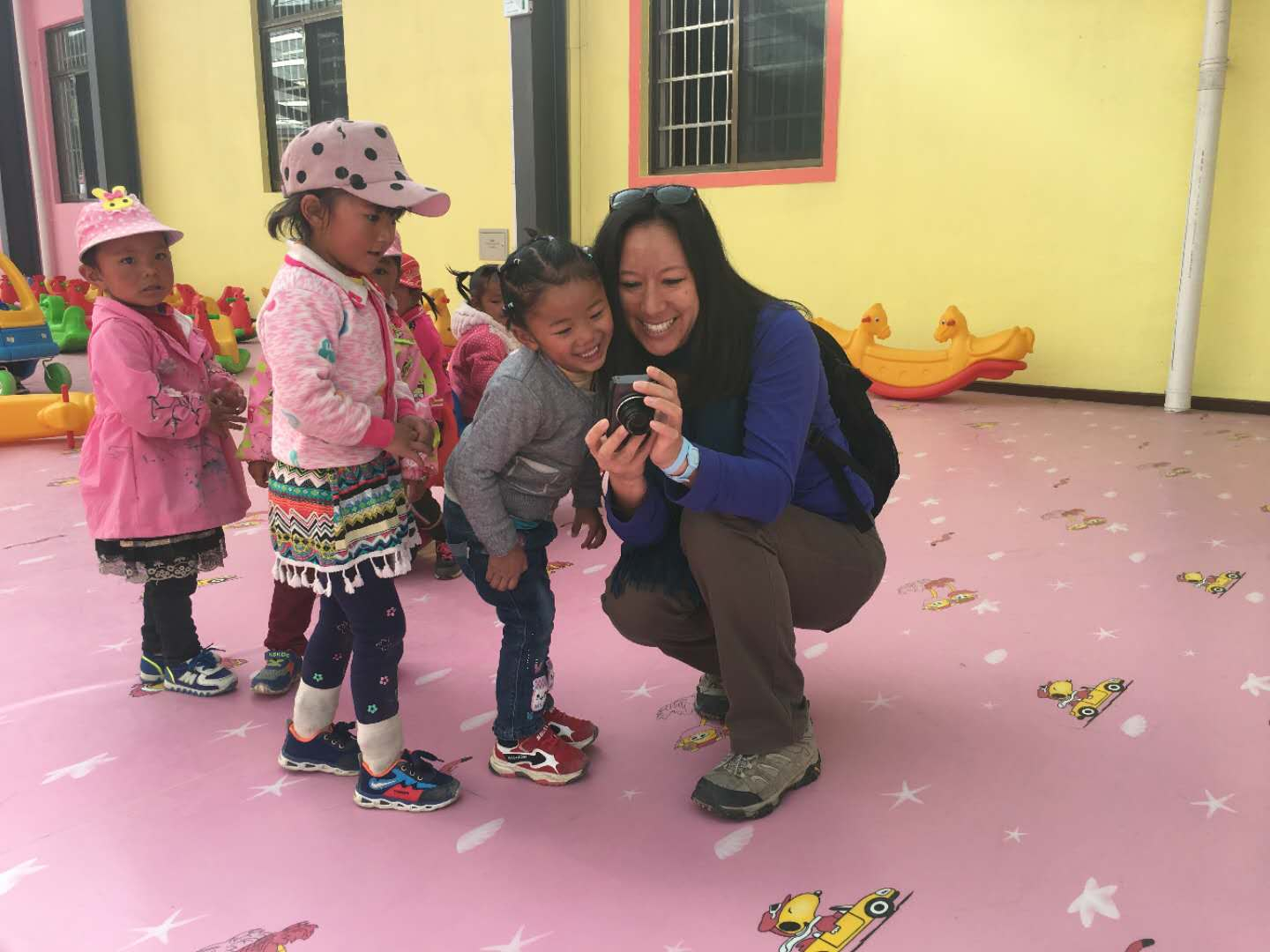
CGTN Digital Editor Sim Sim Wissgott (C) shows a photo on her digital camera to a group of pupils at a local kindergarten in Shiquanhe, Ngari Prefecture, Tibet Autonomous Region on August 29, 2018. /CGTN Photo
CGTN Digital Editor Sim Sim Wissgott (C) shows a photo on her digital camera to a group of pupils at a local kindergarten in Shiquanhe, Ngari Prefecture, Tibet Autonomous Region on August 29, 2018. /CGTN Photo
They say "Never work with children or animals," but interviewing bright little minds comes with its own sets of perks. Halfway through her journey in southwest China's Tibet Autonomous Region to cover local poverty relief efforts, CGTN Digital Editor Sim Sim Wissgott took a photo that recorded "her favorite moment" from the trip.
"One little girl in the local kindergarten caught my attention and I asked if I could take her picture. Straight away, she grinned into the lens. She knew exactly how a digital camera works because she then came over to look at the picture on the little LED screen on the back. A colleague captured the moment and we giggled together for a bit. Neither spoke the other's language but it didn't matter."
Reporters are supposed to be neutral observers of events, and their presence in a story takes the backseat as they record life as it happens –however, some can't help but getting involved and who could ever blame them? We're humans after all.
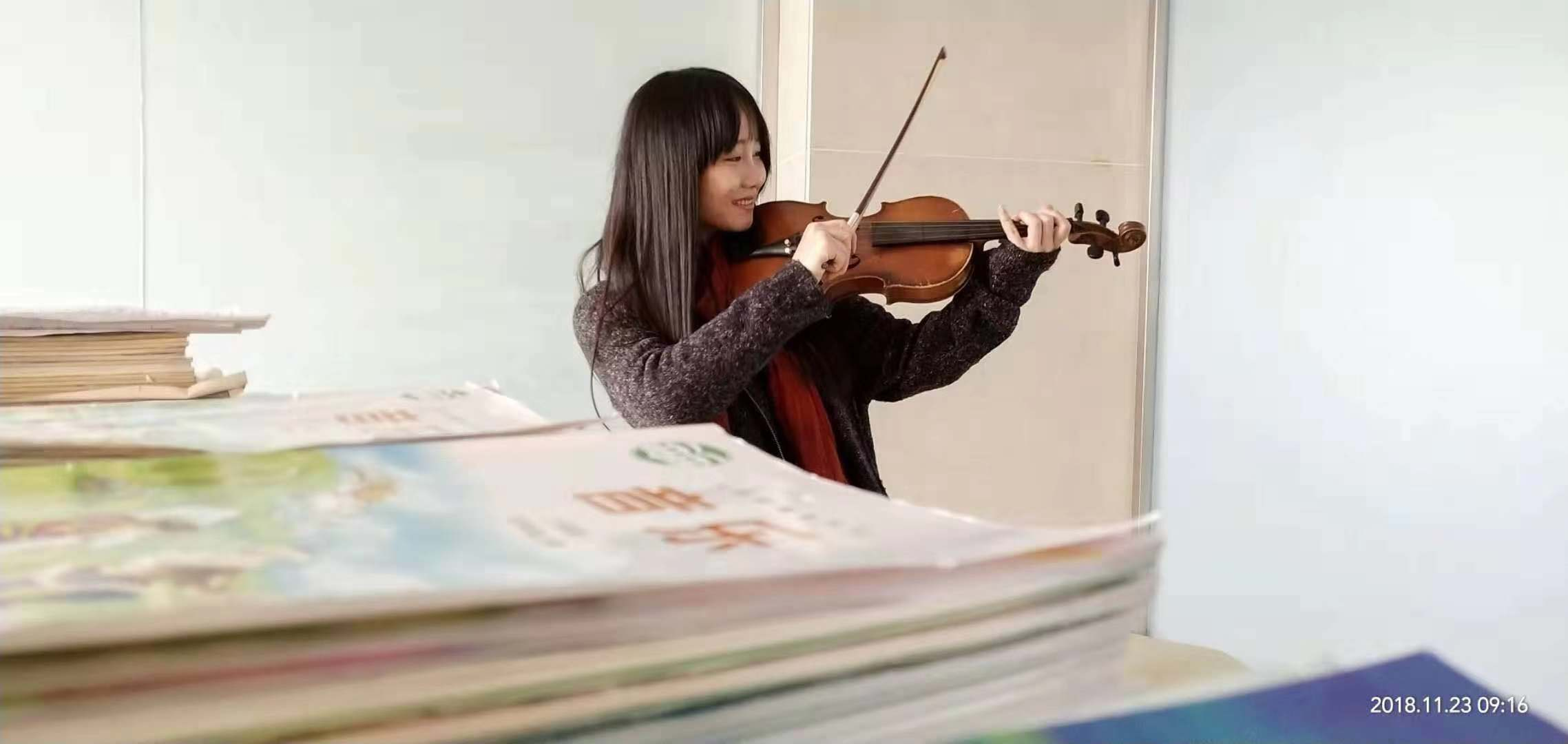
CGTN Digital's Huang Yichang plays the violin for a classroom of HIV-positive school children in Linfen City of Shanxi Province on November 23, 2018. CGTN Photo
CGTN Digital's Huang Yichang plays the violin for a classroom of HIV-positive school children in Linfen City of Shanxi Province on November 23, 2018. CGTN Photo
At the center of the following photo is CGTN Digital's Huang Yichang. She's a skilled videographer but knows very little about playing the violin. That didn't stop her, however, from giving the instrument a go so she could help her interviewee – a group of HIV-positive orphans – warm up to her and open up about their personal stories.
"They long for equal treatment but that is a luxury the society hasn't been able to afford them," she said.
"I hope that our work can make that day come a little sooner."

